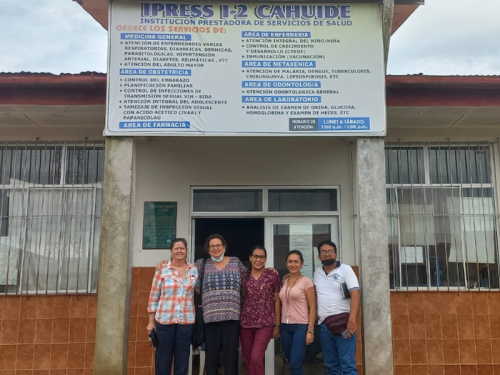Screen and treat strategy to prevent cervical cancer in Peru

Cervical cancer is highly treatable when found early and managed efficiently. The disease is caused by about a dozen cancer-causing types of human papillomavirus (HPV) that persist in the cervix. It’s estimated that half of all sexually active people will have HPV at some point in their lives.
Screening, followed by appropriate management and treatment when needed, is the best way to prevent cervical cancer. The current screening practice in Peru is for patients with visual evidence of cervical lesions or an abnormal Pap smear to be referred to a hospital for triage and, if necessary, treatment.
According to Dr. Valerie Paz Soldan, associate professor of tropical medicine, “The challenge is that women are sent to a fragmented and duplicative health system, with insufficient resources to manage the individuals being referred for triage, even in the capital city of Lima. As a result, many women get lost in the process and never reach triage, let alone treatment. When you send women back home or to their communities, you risk never being able to follow up with them again. What is the point of screening if those who need care will not get the appropriate follow up?”
The prevention and control process was especially challenging in locations like the city of Iquitos, a city of 400,000 people situated in the Peruvian Amazon and only accessible by river or air. This region has the highest incidence of cervical cancer in Peru.
Paz Soldan’s research found that even if a woman was persistent about following up for treatment, it was not unusual for them to make six or seven visits to the hospital before even being seen for triage. In fact, fewer than half of the women living within one hour of the city who were referred to the hospital received triage.
Paz Soldan secured an R01 implementation science grant from the National Institutes of Health (NIH) to co-develop and pilot a new screen-and-treat strategy in Iquitos. Her process was participatory and inclusive. Along with a collaborator who is an expert on HPV and cervical cancer, she worked with local stakeholders to examine the current fragmented system, find leverage for change, develop the strategy, and then implement and monitor the new strategy.
For this new strategy, women were screened for cancer-causing HPV types, and, if positive, they were evaluated by a doctor at the primary level of care. Eligible patients were then treated immediately with ablative therapy, which uses heat or cold to destroy, or ablate, the cervix without the need for more invasive techniques. In eight out of 10 cases, ablative therapy can eliminate the virus. Only those with large lesions or suspected cancer were referred to the hospital, significantly reducing the number seeking triage at the hospital and ensuring greater efficiency in the system.
The pilot program benefitted from consistent collaboration with the Peruvian Ministry of Health, which is currently developing national guidelines applying this screen-and-treat strategy throughout the country.
“The idea is if we could make this [screen-and-treat] strategy work in this challenging rainforest city, then we can make it work everywhere else,” said Paz Soldan. “And the reality is that even in the capital city of Lima, our study found that there are insufficient resources to refer all screened positive women to a hospital. The more women get managed at the primary level, the increased likelihood of ensuring they finalize needed follow up.”
New NIH 5-year funding is being used to study the scale up of this process in new regions of Peru, and as a researcher she’s thrilled that her work is making a real difference in women’s lives. “The national guidelines will be applied throughout Peru and are based on the work that we did,” she says. “The impact of this work is life-changing for many, many, many women in Peru.”
The process was slow, Paz Soldan adds, but worth it because they were able to generate evidence leading to lasting change. She always ends presentations with the proverb, “If you want to go fast, go alone; if you want to go far, go accompanied,” and this this project definitely demonstrated the truth of that statement.
